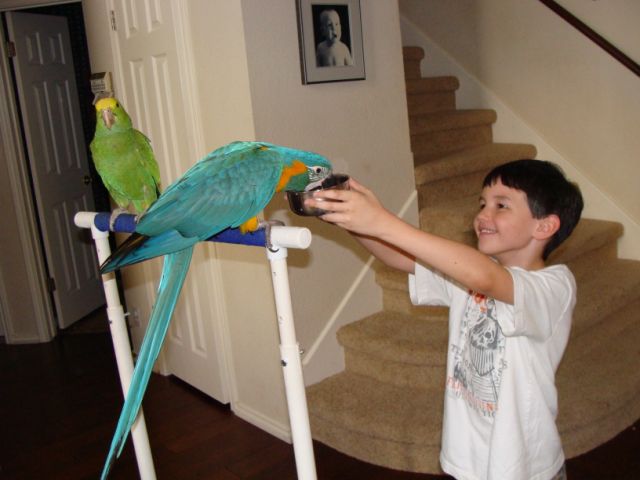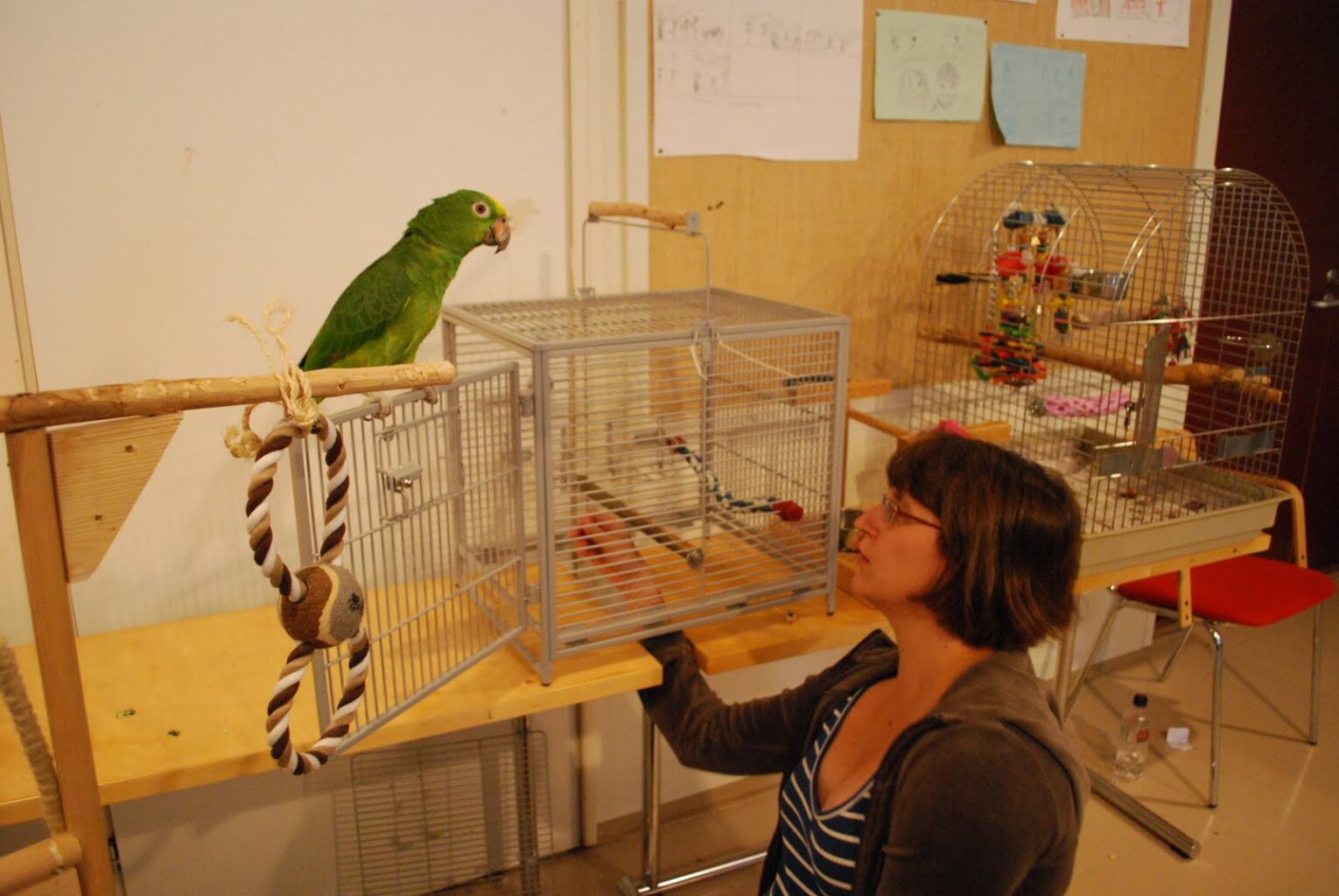
Training your parrot in new environments can be a rewarding experience, enhancing their adaptability and confidence. However, new settings can also be challenging for parrots, as they may feel anxious or distracted. Understanding how to effectively train your parrot in unfamiliar surroundings can help ensure a positive and successful experience. This article explores tips and techniques for training your parrot in new environments, helping them become well-adjusted and confident birds.
The Importance of New Environments
Introducing your parrot to new environments is crucial for their mental stimulation and socialization. It helps prevent boredom and keeps their mind active. Moreover, exposing your parrot to different settings can reduce fear and anxiety, making them more adaptable to changes in their surroundings. Whether it’s a different room in your house, a friend’s home, or an outdoor setting, new environments can offer enriching experiences that contribute to your parrot’s overall well-being.
Preparing for Training in New Environments
Before introducing your parrot to a new environment, it’s essential to prepare adequately to ensure their comfort and safety. Start by selecting a location that is safe and free from potential hazards. The area should be quiet and relatively free from distractions to help your parrot focus during training sessions. Familiarize yourself with the new setting to identify any potential issues that might arise, such as unsafe objects or loud noises.
Begin by gradually introducing your parrot to the new environment. Start with short visits, allowing your parrot to explore and become comfortable with the surroundings. Bring along familiar items such as their favorite toys, perches, and treats to create a sense of security. These familiar objects can help your parrot feel more at ease and reduce stress.
Establishing Trust and Confidence
Building trust and confidence in your parrot is essential for successful training in new environments. Spend time with your parrot in the new setting, offering gentle reassurance and positive reinforcement. Use a calm and soothing tone of voice to communicate safety and comfort. Allow your parrot to explore at their own pace, and avoid forcing them to interact with the environment before they are ready.
Positive reinforcement is a powerful tool for building confidence. Reward your parrot with treats, praise, or affection whenever they show curiosity or engage with the new environment. Consistency in your responses helps reinforce positive behaviors and encourages your parrot to feel more secure. Over time, your parrot will associate the new setting with positive experiences, making training more effective.
Conducting Training Sessions
When conducting training sessions in new environments, start with familiar commands and routines to provide a sense of continuity and security. This familiarity helps your parrot focus and feel more confident despite the new surroundings. Gradually introduce new commands or tricks, using positive reinforcement to reward desired behaviors.
Keep training sessions short and engaging to prevent your parrot from becoming overwhelmed or bored. Frequent breaks and rewards help maintain their interest and motivation. If your parrot becomes stressed or distracted, take a step back and allow them time to relax before resuming training. Patience and flexibility are key to successful training in new environments.

Using Interactive Play
Interactive play is an excellent way to make new environments enjoyable for your parrot while reinforcing training. Games and activities that your parrot enjoys can help them feel more comfortable and reduce anxiety. Use toys, puzzles, and foraging activities to engage your parrot and keep their mind active. Incorporating play into training sessions can make learning fun and stress-free.
Encouraging exploration and curiosity through play helps your parrot become more familiar with the new environment. Supervise your parrot during play to ensure their safety and provide positive reinforcement for exploring and engaging with their surroundings. Over time, your parrot will become more confident and adaptable, making training in new settings more effective.
Handling Distractions
New environments often come with distractions that can challenge your parrot’s focus during training. It’s important to acknowledge these distractions and use them as opportunities for learning. Gradually introduce mild distractions during training sessions and reward your parrot for maintaining focus. This helps build their ability to concentrate despite external stimuli.
If a distraction becomes too overwhelming, calmly redirect your parrot’s attention back to you and resume training once they are calm. Over time, your parrot will learn to ignore minor distractions and focus on training, improving their overall adaptability and behavior.
Consistency and Patience
Consistency and patience are crucial when training your parrot in new environments. Establish a regular training schedule and stick to it, even when introducing new settings. Consistent training helps reinforce learned behaviors and provides a stable routine that your parrot can rely on.
Patience is essential, as adapting to new environments can take time. Progress may be slow initially, but with persistence and positive reinforcement, your parrot will become more comfortable and confident. Celebrate small successes and build on them gradually, ensuring a positive and rewarding experience for both you and your parrot.
Conclusion
Training your parrot in new environments can enhance their adaptability and confidence, contributing to their overall well-being. By preparing adequately, building trust, using positive reinforcement, and incorporating interactive play, you can create a positive training experience in any setting. Handling distractions and maintaining consistency and patience are key to successful training. With dedication and care, you can help your parrot thrive in diverse environments, making them well-adjusted and confident companions.
How does a parrot adapt to its environment?
Parrots adapt to their environment through a combination of social interaction, mental stimulation, and routine. Initially, they may feel stressed or anxious in a new setting. To help them adapt, provide a consistent and calm environment with plenty of perches, toys, and hiding spots within their cage. Gradually introduce them to different areas of your home while ensuring their safety. Socialization is key—spend time talking to and gently handling your parrot to build trust. Over time, as they become familiar with their surroundings and develop a bond with their human companions, parrots will adapt and thrive.
How long should parrot training sessions be?
Parrot training sessions should be short and frequent to keep your bird engaged and prevent boredom. Ideally, sessions should last between 10 to 15 minutes, two to three times a day. This duration is long enough to teach new commands or tricks without overwhelming your parrot. Consistency is crucial, so try to conduct training sessions at the same times each day. Always end sessions on a positive note, rewarding your parrot with praise or treats for their efforts. This approach will help reinforce positive behavior and make training an enjoyable experience for your parrot.
How do you train a scared parrot?
Training a scared parrot requires patience, gentleness, and gradual exposure. Start by creating a calm and safe environment for your parrot. Spend time near the cage, speaking softly to build trust. Offer treats through the bars to create positive associations. Gradually introduce your hand, allowing the parrot to approach at its own pace. Once the parrot is comfortable, begin basic training, such as step-up commands, using positive reinforcement. Keep sessions short and always reward calm behavior. Avoid sudden movements or loud noises that could startle your parrot. With time and consistency, your parrot will gain confidence and respond positively to training.
How do you retrain a parrot?
Retraining a parrot involves reassessing their current behavior and gradually introducing new, positive habits. Start by identifying any triggers for undesirable behaviors. Reestablish trust by spending quality time with your parrot and offering plenty of positive reinforcement. Reintroduce basic training commands like “step up” using treats and praise. Consistency is key; practice these commands regularly in short sessions. Gradually increase the complexity of the training as your parrot becomes more comfortable and confident. Be patient and persistent, as retraining can take time. Celebrate small successes along the way to encourage continued progress.
